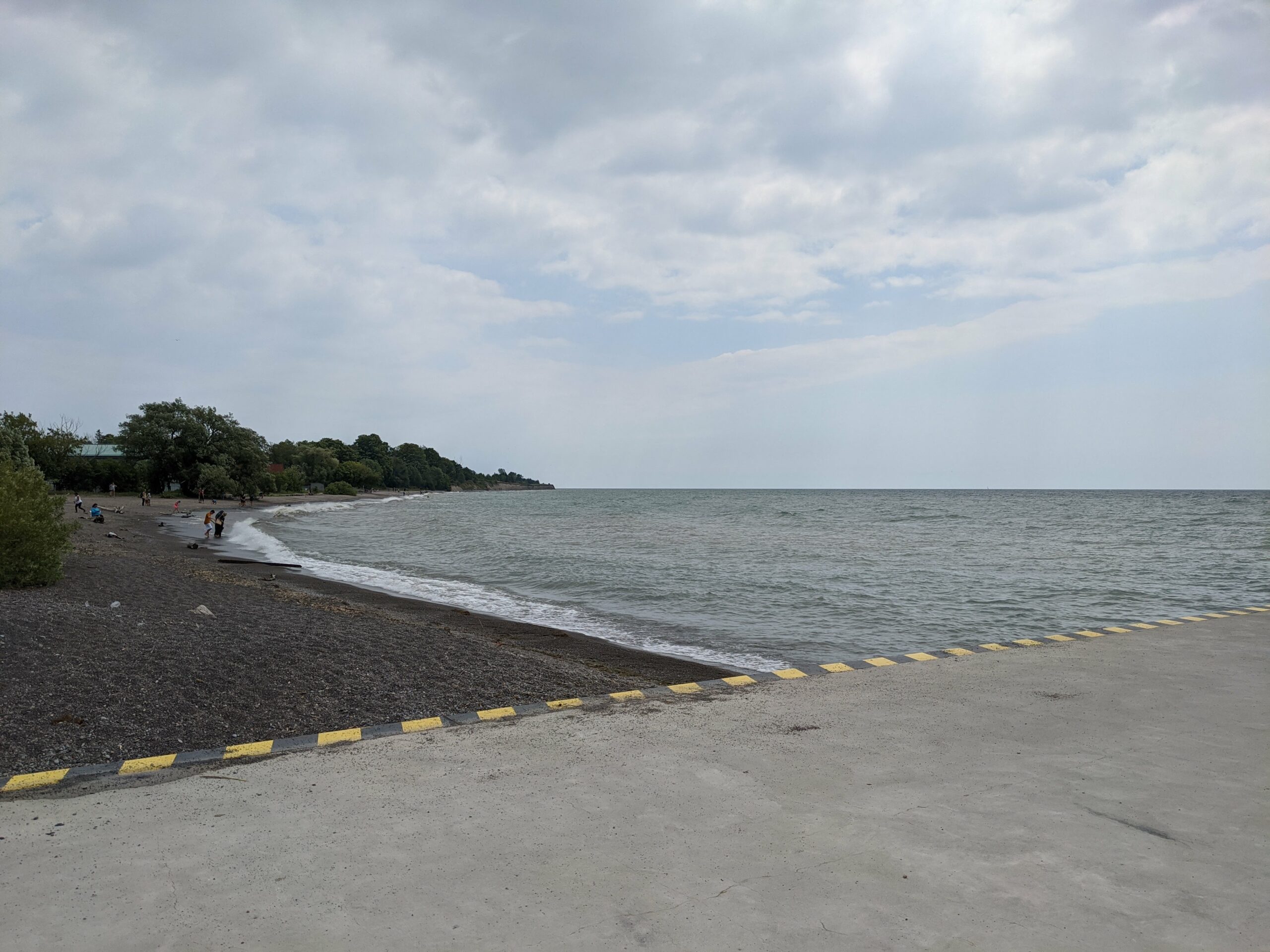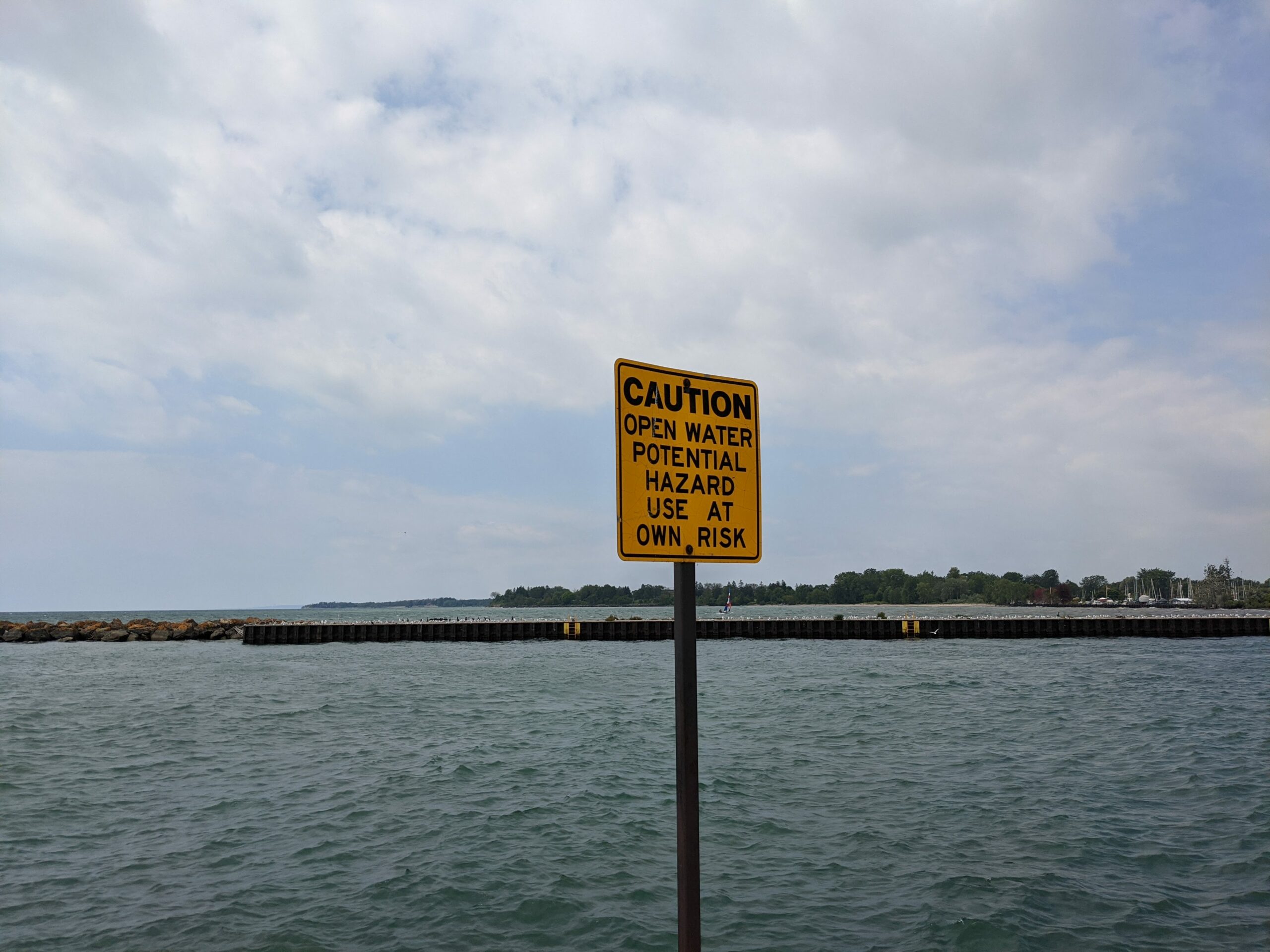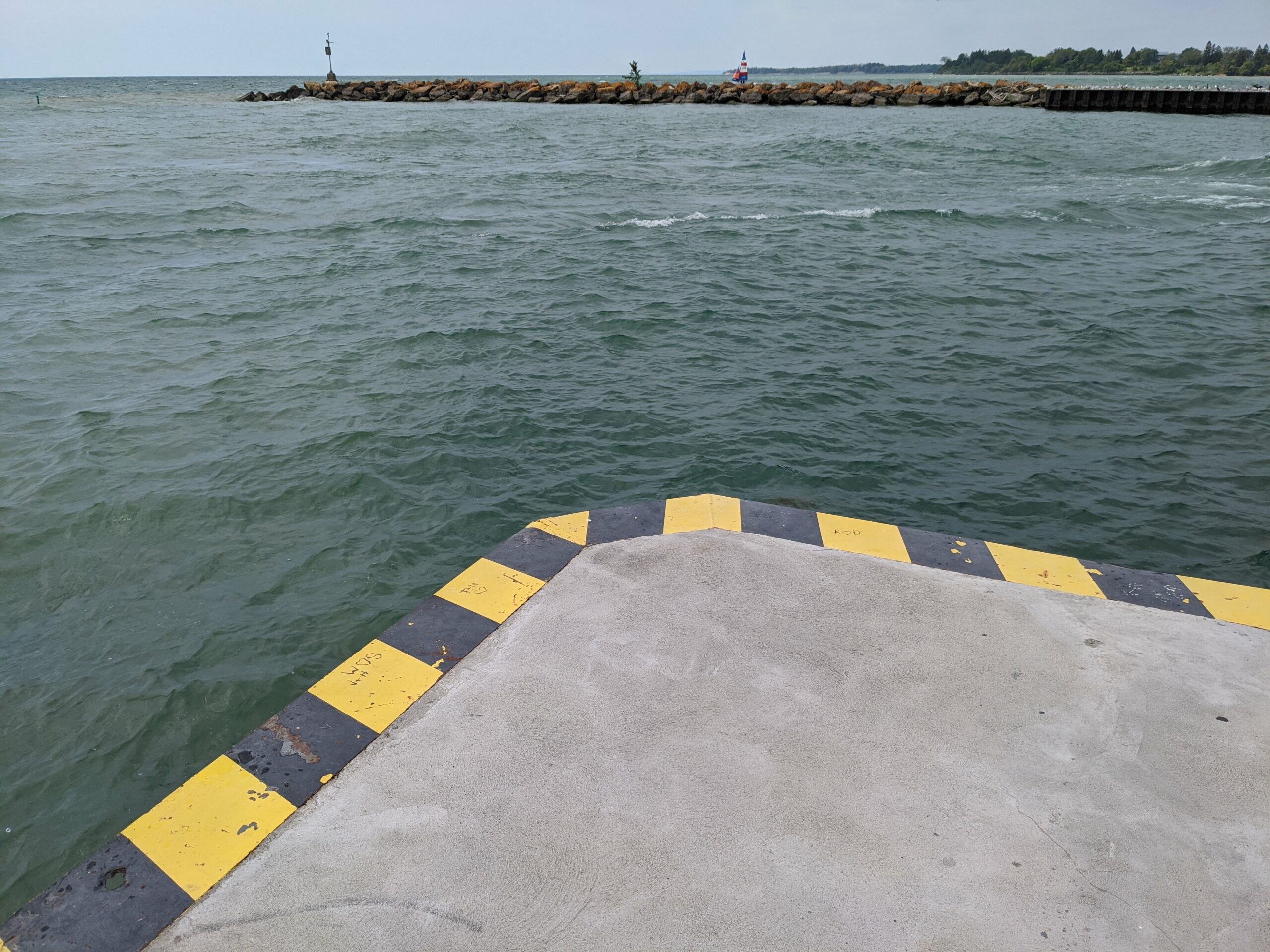The Pros
- Better price
- Great design
- Solid battery life
The Cons
- No wireless charging
- No 90Hz display
- No telephoto lens
It’s finally here. After months of waiting, rumours and speculation, Google finally announced the Pixel 4a, the follow-up to last year’s much-loved mid-range Pixel 3a.
If you’re wondering why it’s late, you’re not alone. But the reason is also precisely what you’d expect: the ongoing pandemic. In a press briefing about the phone, Google explained that COVID-19 impacted the supply chain and caused delays. While it didn’t force Google to drop features from the 4a, it did shape how the company decided to approach it.
For example, Google re-adjusted its launch timelines to ensure safety and opted for a staggered global rollout (which is why Canadians can’t get the Pixel 4a until September 10th). It’s also one of the motivations behind the lower cost of the Pixel 4a. Last year’s Pixel 3a cost $549, and the bigger 3a XL cost $649. The 4a costs just $479 with a larger display and battery than the 3a.
However, Google spruced up the design and improved the affordable Pixel in several ways. The 4a isn’t a perfect phone, but as someone who spent the last several months using the Pixel 4 as a daily driver, I think I prefer the 4a.
A modern Pixel
![]()
Pixel 4a
Pixel 3a
Pixel 3a XL
Google Pixel 4
Display
5.81-inch FHD+ (1080 x 2340) OLED display, 443 ppi, 19.5:9 aspect ratio
5.6-inch gOLED, 2,220 x 1,080 pixels, 18.5:9 aspect ratio
6.0-inch gOLED, 2,160 x 1,080 pixels, 18:9 aspect ratio
5.7-inch, OLED display, 1080 x 2160 pixels, 90Hz refresh rate, 19:9 aspect ratio
Processor
Qualcomm Snapdragon 730G
Snapdragon 670
Snapdragon 670
Snapdragon 855
RAM
6GB LPDDR4x
4GB of RAM
4GB of RAM
6GB of RAM
Storage
128GB
64GB
64GB
64GB, 128GB
Dimensions (in.)
144 x 69.4 x 8.2 mm
151.3 x 70.1 x 8.2mm
160.1 x 76.1 x 8.2mm
147.1 x 68.8 x 8.2mm
Weight
143g
147g
167g
162g
Rear Facing Camera
12.2-megapixel dual-pixel camera with autofocus, OIS and EIS, f/1.7 aperture, 77-degree FOV
12.2-megapixel (f/1.8, OIS, EIS)
12.2-megapixel (f/1.8, OIS, EIS)
16-megapixel (f/2.4, OIS, wide angle) + 12.2-megapixel (f/1.7, OIS, telephoto)
Front Facing Camera
8-megapixel f/2.0 fixed focus 84-degree FOV
8-megapixel (f/2.0)
8-megapixel (f/2.0)
8-megapixel (f/2.0, ultra-wide)
OS
Android 10
Android 9 Pie
Android 9 Pie
Android 10
Battery
3140mAh
3,000mAh
3,700mAh
2,800mAh
Network Connectivity
LTE, GSM, EDGE, CDMA
GSM/HSPA/LTE
GSM/HSPA/LTE
GSM/HSPA/LTE
Sensors
Proximity, ambient light, accelerometer, gyrometer, magnetometer, barometer
Fingerprint (rear-facing), accelerometor, gyro, proximity
Fingerprint (rear-facing), accelerometor, gyro, proximity
face unlock, accelerometer, gyro, proximity, compass, barometer
SIM Type
Nano SIM and eSIM
Nano SIM, eSIM
Nano SIM, eSIM
Nano SIM, eSIM
Launch Date
September 10, 2020
May 7, 2019
May 7, 2019
October 15, 2019
Misc
Colour: Just Black
Colours: Just Black, Clearly White, Purple-ish | Google Lens, Active Edge
Colours: Just Black, Clearly White, Purple-ish | Google Lens, Active Edge
Colours: Just Black, Oh So Orange, Clearly White | Motion Sense, face unlock, New Assistant (coming to Canada), Active Edge
Display
Pixel 4a
5.81-inch FHD+ (1080 x 2340) OLED display, 443 ppi, 19.5:9 aspect ratio
Pixel 3a
5.6-inch gOLED, 2,220 x 1,080 pixels, 18.5:9 aspect ratio
Pixel 3a XL
6.0-inch gOLED, 2,160 x 1,080 pixels, 18:9 aspect ratio
Google Pixel 4
5.7-inch, OLED display, 1080 x 2160 pixels, 90Hz refresh rate, 19:9 aspect ratio
Processor
Pixel 4a
Qualcomm Snapdragon 730G
Pixel 3a
Snapdragon 670
Pixel 3a XL
Snapdragon 670
Google Pixel 4
Snapdragon 855
RAM
Pixel 4a
6GB LPDDR4x
Pixel 3a
4GB of RAM
Pixel 3a XL
4GB of RAM
Google Pixel 4
6GB of RAM
Storage
Pixel 4a
128GB
Pixel 3a
64GB
Pixel 3a XL
64GB
Google Pixel 4
64GB, 128GB
Dimensions (in.)
Pixel 4a
144 x 69.4 x 8.2 mm
Pixel 3a
151.3 x 70.1 x 8.2mm
Pixel 3a XL
160.1 x 76.1 x 8.2mm
Google Pixel 4
147.1 x 68.8 x 8.2mm
Weight
Pixel 4a
143g
Pixel 3a
147g
Pixel 3a XL
167g
Google Pixel 4
162g
Rear Facing Camera
Pixel 4a
12.2-megapixel dual-pixel camera with autofocus, OIS and EIS, f/1.7 aperture, 77-degree FOV
Pixel 3a
12.2-megapixel (f/1.8, OIS, EIS)
Pixel 3a XL
12.2-megapixel (f/1.8, OIS, EIS)
Google Pixel 4
16-megapixel (f/2.4, OIS, wide angle) + 12.2-megapixel (f/1.7, OIS, telephoto)
Front Facing Camera
Pixel 4a
8-megapixel f/2.0 fixed focus 84-degree FOV
Pixel 3a
8-megapixel (f/2.0)
Pixel 3a XL
8-megapixel (f/2.0)
Google Pixel 4
8-megapixel (f/2.0, ultra-wide)
OS
Pixel 4a
Android 10
Pixel 3a
Android 9 Pie
Pixel 3a XL
Android 9 Pie
Google Pixel 4
Android 10
Battery
Pixel 4a
3140mAh
Pixel 3a
3,000mAh
Pixel 3a XL
3,700mAh
Google Pixel 4
2,800mAh
Network Connectivity
Pixel 4a
LTE, GSM, EDGE, CDMA
Pixel 3a
GSM/HSPA/LTE
Pixel 3a XL
GSM/HSPA/LTE
Google Pixel 4
GSM/HSPA/LTE
Sensors
Pixel 4a
Proximity, ambient light, accelerometer, gyrometer, magnetometer, barometer
Pixel 3a
Fingerprint (rear-facing), accelerometor, gyro, proximity
Pixel 3a XL
Fingerprint (rear-facing), accelerometor, gyro, proximity
Google Pixel 4
face unlock, accelerometer, gyro, proximity, compass, barometer
SIM Type
Pixel 4a
Nano SIM and eSIM
Pixel 3a
Nano SIM, eSIM
Pixel 3a XL
Nano SIM, eSIM
Google Pixel 4
Nano SIM, eSIM
Launch Date
Pixel 4a
September 10, 2020
Pixel 3a
May 7, 2019
Pixel 3a XL
May 7, 2019
Google Pixel 4
October 15, 2019
Misc
Pixel 4a
Colour: Just Black
Pixel 3a
Colours: Just Black, Clearly White, Purple-ish | Google Lens, Active Edge
Pixel 3a XL
Colours: Just Black, Clearly White, Purple-ish | Google Lens, Active Edge
Google Pixel 4
Colours: Just Black, Oh So Orange, Clearly White | Motion Sense, face unlock, New Assistant (coming to Canada), Active Edge
Google finally designed a modern Pixel smartphone. The Pixel 3 XL came close with its nearly edge-to-edge display, but many decried the overly large notch. MobileSyrup’s Brad Bennett is a staunch defender of the notch, but on the whole, most don’t like it. The Pixel 4 and 4 XL also came close, but opted for a large top-bezel to make room for the Soli radar sensor and face unlock tech.
The Pixel 4a doesn’t have either of those things, which gave Google the liberty of trying something new — well, new for Google. It included a hole-punch camera cutout in the display like Samsung’s Galaxy S10e, although the Pixel 4a put it in the top left corner instead of the right.
Starting top and going clockwise: Samsung Galaxy S10e, Pixel 4a, Pixel 4
I’m a fan of the design, and I think the Pixel 4a looks stellar. Further adding to the excellence of the 4a is the phone’s overall look and feel. Google opted for a polycarbonate back with a soft-touch material similar to what’s found on the Pixel 3 series and the white and orange Pixel 4. It feels great in hand, doesn’t smudge like glass and isn’t slippery like the glossy black Pixel 4. Perhaps this is part of the reason I liked the Pixel 4a more than my Pixel 4 — it just feels nicer to hold. I’m sure the orange or white Pixel 4 would feel more premium, however.
The other benefit of the polycarbonate back panel is weight. While heavier phones tend to seem more premium and well-built, I appreciate the lightness of the 4a. I find it makes holding the phone more comfortable, especially when watching a video or trying to use it with one hand.
Making the most of the hole
![]()
The Pixel 4a’s size is also perfect. It’s slightly shorter than the Pixel 4 and Pixel 3, but has a larger display than both. Some people really like giant phones, but I’d rather have something that fits well in my hand. Plus, with the trend towards low-bezel screens, the Pixel 4a still offers a nearly 6-inch display without being physically large.
In fact, the display on the Pixel 4a as a whole is excellent. It comes in at a Full HD+ (FHD+) resolution of 1080 x 2340 pixels and 443ppi. Some prefer to have higher-res displays, but I’ve always found no tangible benefit for higher resolutions after a certain point. At this size of screen, it can be really difficult to see individual pixels, making higher resolutions less meaningful. For perspective, the Pixel 4a has almost the same resolution as my 25-inch ultrawide desktop monitor.
When I reviewed the Samsung Galaxy S20 earlier this year, I had to choose between using the full resolution of the screen at 60Hz or rendering at a lower resolution for a 120Hz refresh rate. I couldn’t tell the difference between the resolutions, but I certainly felt a difference between the refresh rates.
With the Pixel 4a, it’s much the same. The display looks great to me. It’s plenty sharp, and the colours look great. My only real complaint is that the screen has a 60Hz refresh rate. However, at the Pixel 4a’s price, I can forgive that. For most people who haven’t used a higher refresh rate screen, going from a 60Hz display to the Pixel 4a’s 60Hz screen won’t matter. If your current phone has a high-refresh-rate screen, you’ll feel the difference.
![]()
The main benefit of high refresh rate screens is that it feels smoother and more responsive to touch input. It’s something that is easier to experience by trying a high refresh rate display yourself.
I think it’s also worth pointing out that Google created several excellent, fun wallpapers for the 4a that specifically make use of the camera cutout. For example, one wallpaper has several dogs playing with black balls, one of which is the camera hole. In another wallpaper, the camera cutout is the hole of a basketball net. These creative wallpapers look great.
Handles day-to-day operations like a champ…
![]()
Despite the lower-end, mid-range Snapdragon 730 chipset, the Pixel 4a performed quite well. Aside from the odd janky, stuttery animation — something I encounter in almost every Android phone I use — the 4a handled everything I threw at it as well as last year’s Pixel 4.
That includes browsing social media like Twitter and Reddit, watching YouTube videos, using chat apps and more. Plus, with the 6GB of RAM, I rarely encountered closed apps that needed a restart.
I’m not much of a mobile gamer, however in my testing, the Pixel 4a didn’t have any difficulties and performed well. That said, if gaming is a priority on your phone, you will want to invest in higher-end hardware.
Ultimately, I think the highest praise I can heap on the Pixel 4a is that performance-wise, it feels just as snappy and fast as the Pixel 4, sans 90Hz display.
I also ran some benchmarks to compare, although there are a few caveats here. For one, benchmarks often don’t tell the whole story. How a phone feels in day-to-day use can differ significantly from the number assigned by a benchmark. That said, benchmarks can give people an idea of what performance is like.
Update 08/21/2020 at 12:32pm: Originally, we opted to use the AnTuTu benchmark for this review since at the time of writing, Geekbench — what we normally use — wasn’t available on the Pixel 4a. However, a combination of Geekbench becoming available for the 4a and recent reports about AnTuTu clones taking over the Play Store following Google removing the original benchmark app led us to replace this section with an updated look at the Geekbench numbers. Fortunately, the benchmark story doesn’t change significantly, aside from the LG Velvet.
From left to right: Pixel 4a, Pixel 4, Pixel 3, LG Velvet, OnePlus 8 Pro
The Pixel 4a benchmarked similarly to both the older Pixel 3 and 2019’s Pixel 4 flagship, with a 550 single-core score and 1628 multi-core score to the 3’s 505/1974 scores. Although the Pixel 3 sports an older Snapdragon 845 processor, you can still see the benefits of the 800-series better multi-core performance. The Pixel 4 outperformed both devices handily with scores of 658/2203.
However, the comparison I looked forward to most was with the LG Velvet, the only device MobileSyrup had to hand with a Snapdragon 765G processor. The Pixel 5 is rumoured to use a Snapdragon 765 processor, which theoretically should mean similar performance to the LG Velvet. As such, I felt it was important to compare the Pixel 4a to the Velvet to get an idea what extra benefit the Pixel 5 might bring.
Unfortunately, the Velvet performed shockingly bad in Geekbench and scored lowest of all the phones tested (in the original AnTuTu benchmark we compared, the Velvet scored slightly better than the Pixel 4a, but considering the mix up with fake apps, we can’t really trust those numbers anyway). We ran the Velvet test multiple times to see if there was some sort of issue, but the phone continued to score poorly, with the 349/1209 scores above being the best outcome.
While not necessarily indicative of how the Pixel 5 will perform, I must say that it does raise some concerns for Google’s rumoured upcoming flagship. If it can’t perform significantly better than the more affordable 4a, it may be hard to justify the extra cost for the Pixel 5.
Finally, we included a OnePlus 8 Pro benchmark to show how higher-end Snapdragon 865 devices perform. Based on the 909/3332 scores, it seems like the 865 is quite a bit more powerful.
… and lasts all day too
![]()
One area where the Pixel 4a consistently impressed me was battery life. At first, I didn’t expect the 3,140mAh cell in the 4a to perform that well, but the extra 340mAh compared to the Pixel 4 helped a lot — I’m sure the 60Hz display was also a factor here.
On average, the Pixel 4a made it almost through the entire day and I rarely had to top up before going to bed. I, unfortunately, couldn’t say the same for the Pixel 4, which I almost always have to charge twice per day.
The Pixel 4a doesn’t have the best battery life, however. I’d love to see a phone that truly lasts me two days on a charge, but I’m happy to take a Pixel that gets me through a day most of the time.
For the moments when you do need some extra charge, the Pixel 4a does support 18W fast charging. Unfortunately, Google once again skipped wireless charging in the 4a. It’s not a significant issue, especially considering the phone’s price, but I do appreciate the convenience of wireless charging and certainly missed it while testing the 4a.
Pixel 4 camera without the zoom
![]()
Finally, the Pixel 4a camera is a tremendous offering from Google. In my experience, few phones in this price range offer a camera as good as this.
Google took the primary Pixel 4 camera and put it in the affordable 4a. From a hardware perspective, the Pixel phones arguably never have the most impressive specs. But with Google’s software magic, they consistently take excellent pictures.
![]()
In my testing with the 4a, it nailed almost every shot. The two most significant differences between the 4a and the Pixel 4 camera are that the 4 tends towards warmer, yellower tones and has much better zoom thanks to the telephoto lens.
![]()
The former isn’t a huge deal, depending on your taste, and is really only noticeable in some side-by-side photos. The latter is mostly a factor of hardware differences — the Pixel 4 has a second telephoto camera.
That also means most of the Pixel 4 camera software goodies make a return on the Pixel 4a. Portrait mode, for example, returns and is just as good as ever. Night Sight also comes back and is quite capable — it even includes the astrophotography mode from the Pixel 4. The 4a supports 4K video recording as well.
Likewise, the front-facing camera on the 4a is very similar, although there are a few small hardware differences. Namely, the 4a has a slightly smaller pixel size and a narrower field of view, but overall, both 8-megapixel selfie shooters do excellent work.
Missing a few ‘flagship’ features
![]()
I think it’s important to consider some of the things the Pixel 4a lacks as well. As impressed as I am with the 4a, it doesn’t have some arguably ‘core’ Google Pixel features.
First off, the Pixel 4a doesn’t have Google’s ‘Active Edge’ functionality. Present on Pixels since the Pixel 2, Active Edge lets users squeeze the phone to activate Google Assistant. However, the loss of Active Edge isn’t as drastic as you might think. When I first noticed the feature wasn’t there, I was quite disappointed. But it didn’t take me long to realize I don’t use Active Edge that often anyway. And with the new Android gesture navigation system, Assistant is never more than a swipe away.
The Pixel 4a also lacks the Pixel 4’s Soli sensor and face unlock, which I mentioned up top. Soli I don’t particularly miss. The coolest part about that for me was always that the Pixel 4 would ‘react’ to my hand when I reached for it. I rarely used the Soli gestures to control my phone.
![]()
On the other hand, I miss face unlock more. It’s much more convenient to pick up the phone and have it unlock automatically. That said, the Pixel 4a fingerprint sensor is fast and the phone unlocks very quickly. I also welcome the sensor when wearing a mask. Google’s decision to only offer face unlock on the Pixel 4 seemed shortsighted to me, and that sentiment has only grown throughout the pandemic.
However, I don’t think any of these missing features are explicitly bad. While I may be disappointed by some missing things, the Pixel 4a also reminded me that some of these flagship features are superfluous. Cutting back on the extra bloat can elevate other parts of the experience.
The mid-range competition is heating up
![]()
Overall, the Pixel 4a is an excellent handset. If I were going to buy a phone today, I would very likely purchase the 4a. It’s priced well, performs well for everything that I do, has the latest and greatest Pixel software features and an incredibly capable camera that rivals many flagships out there.
It’s also worth considering that the Pixel 4a includes Google’s three-year software update commitment, so you can comfortably use the 4a for the next few years without worry.
Compared to most other mid-range Android phones available, I think the Pixel 4a is the clear choice. The OnePlus Nord isn’t available in Canada, Samsung’s Galaxy A71 offers better hardware but costs $120 more. Motorola has some good mid-range options, but most don’t match the Pixel 4a’s camera.
One of the best bang-for-your-buck options available
On the Apple side is the iPhone SE which, for some people, I think might be a smarter buy. It's got the latest A13 chip -- the same as Apple's flagship iPhones -- so from a performance perspective, it blows the 4a out of the water. The SE will likely get software updates for at least the next five years. The iPhone SE 64GB comes in at $599 and the 128GB at $669, almost $200 more than the 4a. Considering you can get an extra year or two out of the SE, it could be worth the extra money.
Still, I prefer the Pixel 4a's design and camera, I think someone who wants to keep their phone for a long time and doesn't want to pay a lot for it would be hard-pressed to pick the 4a over the SE.
The other caveat with the Pixel 4a is that in a month or two, Google will unveil the Pixel 4a 5G and the Pixel 5. The 4a 5G will be identical to the 4a, but with a 5G modem and a more expensive $679 price tag. Rumour has it the Pixel 5 will sport a Snapdragon 765 processor and will be a more affordable flagship, unlike the $1000+ Snapdragon 865 devices from OnePlus, Samsung and Motorola.
All that is to say I think it's worth waiting to see what Google does with the Pixel 5. Who knows, it could be a significantly better phone for only a few hundred dollars more.
But if you're looking for an Android phone under $500 with a great camera, reliable software and excellent features, the Pixel 4a is for you.
Update 08/21/2020 at 12:32pm: Updated the review's benchmark section with results from Geekbench and removed the original AnTuTu benchmarks due to the app's removal from the Play Store and the influx of fake clones of AnTuTu.
Update 08/11/2020 at 2:03: Corrected the iPhone SE pricing to show the Canadian price.
If I bought a smartphone today, it would most likely be the Pixel 4a.
MobileSyrup may earn a commission from purchases made via our links, which helps fund the journalism we provide free on our website. These links do not influence our editorial content. Support us here.
















